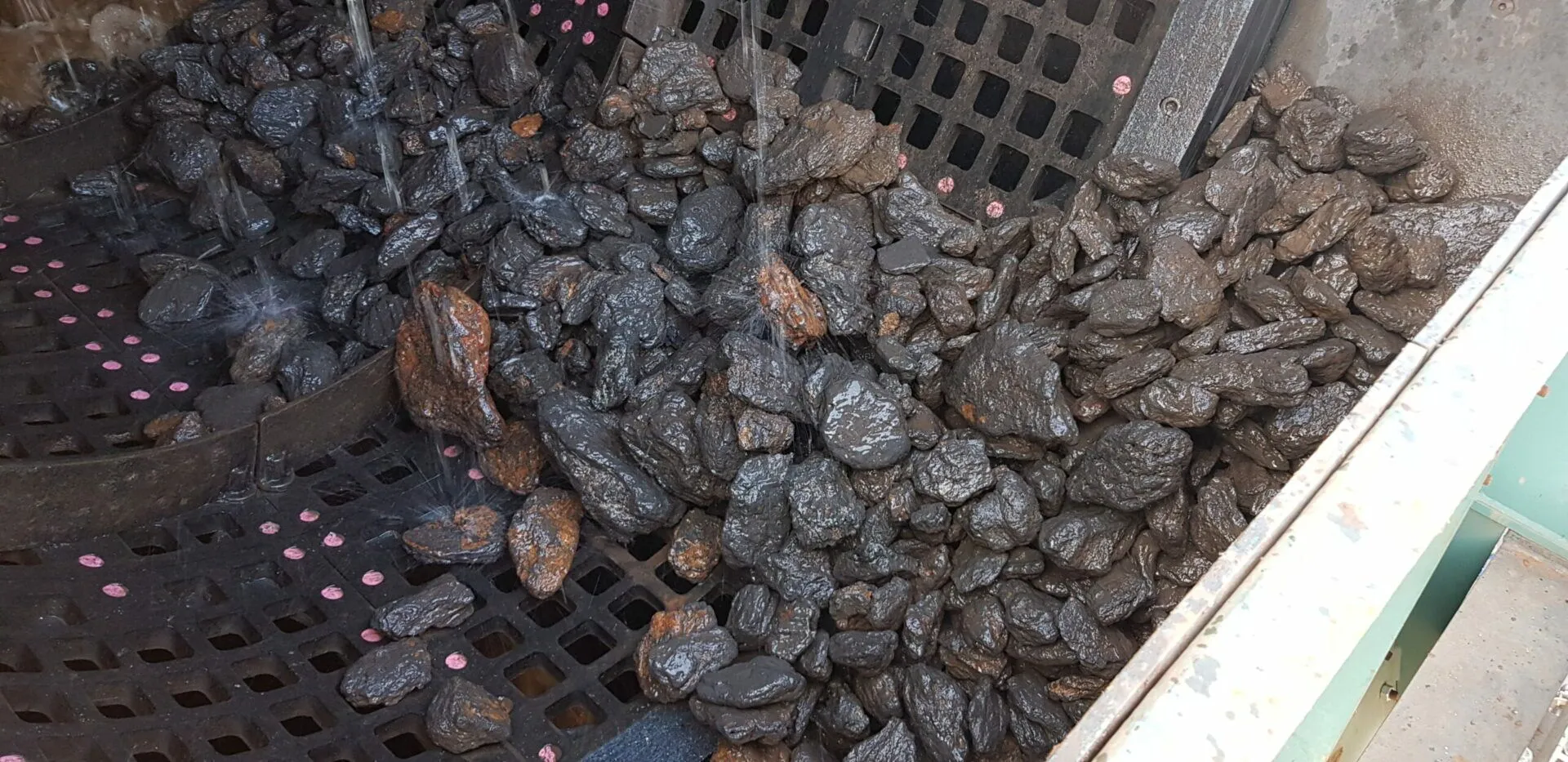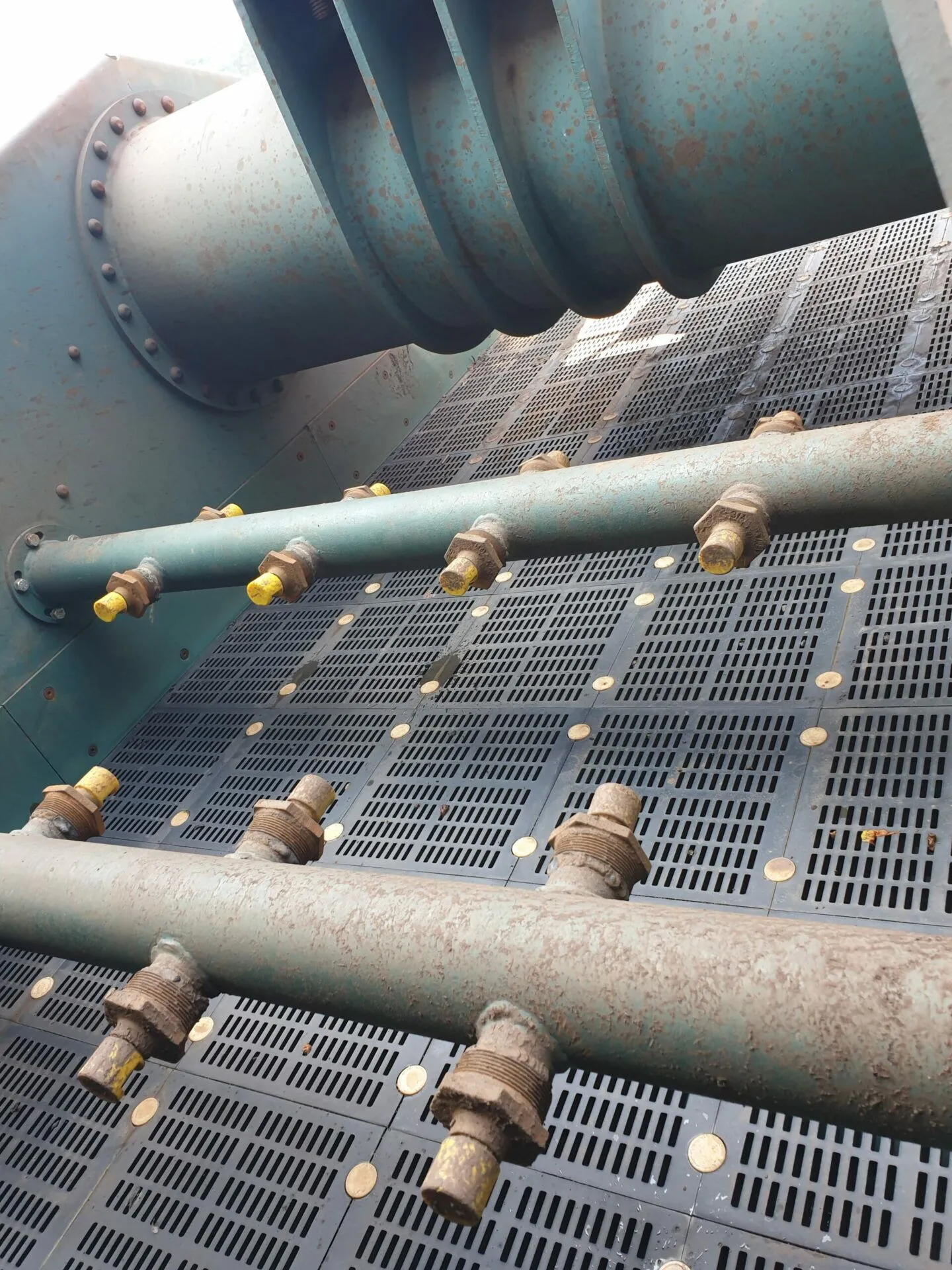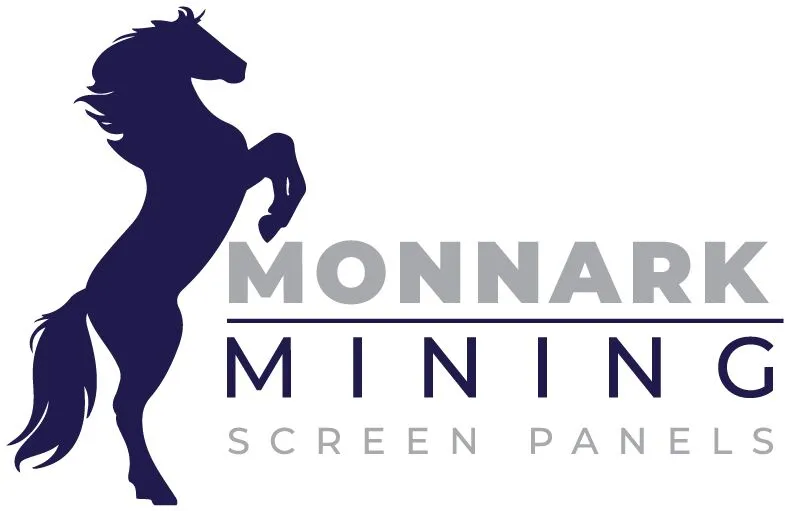Your basket is currently empty!

About Us
We are a dynamic company utilizing cutting-edge technology in tooling design to deliver tailored solutions for the Mineral Processing industry.
About Us
Monnark Mining
Monnark Mining is a dynamic company with the advantage of using latest technology in tooling design and techniques to enhance its product offering.
This allows the company to design tooling and products for the Mineral Processing industry to meet specific customer needs, rather than having to improvise by utilizing existing tooling.
The company team members have vast experience in the mineral processing industry, both in operations and through equipment supply in most mineral sectors.
The company’s engineers have vast experience in comminution and classification and have put this experience into practical equipment solutions.
This, combined with the selection of the best materials for the purpose, have allowed the company to offer equipment with excellent abrasion resistance characteristics, reducing the Total Cost to Company (TCTC) of the end user.
To this effect, the company has designed a panel with a patented V-type sleeve and pin fastening system, which allows it to maximize screening area and thus create a screen panel with a higher Open Area which when combined with the materials of manufacture, lead to an improved screening efficiency.
The company’s obsession to continuously improve its product range through research and development and product innovation, have given it the ability to grow in a very short period of time.

Maximise your screening area with our V-type sleeve system
more information about our panels

Innovation
We understand that the mining industry is constantly evolving, and staying ahead of the curve is crucial.


Technical Efficiency
Our equipment is meticulously designed and engineered to optimize performance and maximize productivity.


Cost Effectiveness
By utilizing advanced manufacturing techniques and materials, we ensure that our products offer durability, longevity, and low maintenance requirements.
more information about our panels
Background Overview
Screening is a process used to separate materials by size, shape, or density. It is an essential function in many industries, including the mining industry, where it is used to separate minerals and other valuable materials from waste materials. The purpose of screening is to ensure that the material being processed meets certain specifications, such as size or quality, and to remove any unwanted materials from the process stream.
The screening process involves the use of screen panels, which are made of a variety of materials, including wire mesh, polyurethane, rubber, and steel. These panels are typically mounted on a vibrating screen deck or other type of screening equipment, and they work by allowing particles of the desired size to pass through while preventing larger (oversize) particles from passing through.
There are several different types of screen panels available, each designed for a specific application. For example, rubber and polyurethane panels are commonly used for coarse screening applications, such as in the primary stages of mineral processing. Polyurethane panels, are suited for fine screening applications, as they are able to more effectively separate small particles.
In the mining industry, screening is used in a variety of applications, including:
Ore Processing – Screening is used to separate the valuable minerals from the waste rock and other materials. This process is typically done in stages, with coarse screening followed by finer screening to achieve the desired particle size.
Scalping – This involves removing the larger, unwanted materials from the process stream before they enter the processing plant. Scalping screens are typically used in the primary stages of processing.
Sizing – Sizing screens are used to classify materials by size, and are commonly used in the final stages of processing to ensure that the final product meets the desired size specifications.
Dewatering – Dewatering screens are used to remove water (or other liquid) from the process stream, which is important in some mining applications.
When selecting screening media, it is important to consider several factors, including:
Material type – The type of material being screened will dictate the type of screening media that is best suited for the application. For example, abrasive materials may require a more durable screen panel than softer materials.
Particle size – The desired particle size range will also impact the choice of screening media. For example, fine screening applications may require a panel with a smaller aperture size than coarse screening applications.
Operating conditions – The operating conditions of the screening equipment, including the frequency and amplitude of the vibration, will impact the selection of screening media. Panels that are too rigid or too flexible may not perform well under certain operating conditions.
Maintenance requirements – The ease of maintenance and replacement of the screening media should also be considered when selecting a panel. Panels that are difficult to replace or require frequent replacement may result in increased downtime and maintenance costs.
In conclusion, screening is a critical function in the mining industry, and the selection of screening media is an important consideration in achieving optimal performance. By understanding the different types of screen panels available and the factors to consider when selecting a panel, mining operations can ensure that their screening processes are efficient and effective in separating valuable materials from waste.
Polyurethane panels as preferred material for screen panels
Monnark Polyurethane (PU) panels is often the preferred material for screen panels due to their numerous benefits, such as durability, versatility, and resistance to wear and tear. Monnark polyurethane is a synthetic polymer that can be tailored to fit various applications, making it a popular material in a range of industries.
One of the most significant advantages of Monnark PU panels is their ability to withstand extreme weather conditions, making them ideal for outdoor applications such as mining, construction, and agriculture. They can resist heat, cold, and moisture, which helps them maintain their structural integrity over time. Additionally, PU panels are lightweight, making them easier to transport and install compared to other materials.
Another key advantage of Monnark PU panels is their acoustic insulation properties. They can be used to reduce noise pollution, making them ideal for applications where noise levels need to be controlled. For instance, PU panels can be used in recording studios, factories, and other areas where noise pollution is a concern.
Monnark PU panels are also resistant to chemical corrosion, making them an ideal choice for applications where they may be exposed to chemicals or other substances. They are easy to clean, and their non-porous surface makes them resistant to bacterial growth, making them ideal for use in areas where hygiene is critical, such as hospitals and food processing facilities.
Low maintenance: Monnark polyurethane panels require very little maintenance and can be easily cleaned with water and soap.
Overall, the versatility, durability, and resistance to wear and tear of Monnark polyurethane panels make them an excellent choice for screen panels. They can be used in a range of applications, including outdoor and indoor settings, and their unique properties provide long-term benefits that other materials cannot match.
Importance of higher open areas
Monnark screen panels are designed with openings of different sizes and shapes to allow particles of certain sizes to pass through while retaining larger particles.
The importance of using the Monnark higher open areas in screen panels are seen with the following examples:
Monnark increased screening efficiency: Higher open areas in the Monnark screen panels allow more material to pass through the screen, which increases the screening efficiency. When the open area of the screen panel is low, the material flow through the screen is restricted, and the screening efficiency decreases. For instance, if the material being screened has a high moisture content, having higher open areas in the screening panel can reduce blinding and improve the screening efficiency.
Reduced Maintenance: Screens with higher open areas require less maintenance as they are less prone to clogging and blinding. When the open area is low, the screening panels can easily become clogged with material, which reduces the efficiency of the screen and requires frequent cleaning or replacement. With higher open areas, the material can pass through the screen panels more easily, reducing the need for maintenance and downtime.
Improved Product Quality: Higher open areas can improve the quality of the screened material. When the open area is low, smaller particles can get trapped in the screen panel, causing the material to become contaminated. With higher open areas, the smaller particles can pass through the screen, resulting in a cleaner and higher-quality product.
Reduced Energy Consumption: Vibrating screens with higher open areas require less energy to operate. When the open area is low, the material flow through the screen is restricted, which requires more energy to move the material through the screen. With higher open areas, the material can flow more easily through the screen, reducing the energy consumption and operating costs.
Overall, higher open areas in screen panels used in vibrating screens are essential for improving screening efficiency, reducing maintenance, improving product quality, and reducing energy consumption. It is important to select the right screen panels with appropriate open areas for the material being screened to ensure optimal performance and cost-effectiveness
Aperture selection: Square or Slotted apertures based on application
Vibrating screens are used in many industries to separate materials based on size or shape. The screen panels are an essential part of the vibrating screen, as they are responsible for separating the desired material from unwanted ones. There are two types of screen panel apertures – square and slotted apertures, each with its own advantages and disadvantages.
Square apertures are the better selection for vibrating screen panels when the material being screened is of uniform size and shape. In such cases, the square apertures provide a higher open area percentage, which means that there is more space for the material to pass through the screen panel. This increases the efficiency of the screening process, as more material can be screened in a shorter time. For example, in the mining industry, square aperture screen panels are often used to screen crushed ore, as the particles are generally of uniform size and shape.
On the other hand, slotted apertures are the better selection for vibrating screen panels when the material being screened is of varying sizes or contains a lot of fines. The slots in the screen panel allow smaller particles to pass through while retaining the larger ones. This prevents the screen panel from getting clogged and reduces the need for frequent cleaning. For example, in the aggregate industry, slotted aperture screen panels are often used to screen sand and gravel, as the particles can vary in size and shape.
In summary, the selection of square or slotted apertures for vibrating screen panels depends on the characteristics of the material being screened. Square apertures are suitable for materials of uniform size and shape, while slotted apertures are suitable for materials of varying sizes and shapes.
Slot aperture installations: Slot With Flow (SWF) vs Slot Into Pin (SIP)
In screen panels applications, slotted apertures can be installed either with the material flow or against the flow, depending on the specific requirements of the application.
When slot apertures are installed with the material flow, they are typically used to classify or grade materials based on size. For example, in a gravel pit, slotted apertures may be installed in a screen panel to separate larger stones from smaller gravel. The material flows over the slotted apertures, and the smaller particles fall through the slots, while the larger stones continue down the conveyor belt.
On the other hand, when slot apertures are installed against the material flow, they are typically used for dewatering or draining applications. For example, in a wastewater treatment plant, slot apertures may be installed in a screen panel to remove solids from the wastewater. The wastewater flows against the slot apertures, and the solids are trapped on the surface of the panel, while the liquid passes through the slots.
To summarize, slot apertures can be installed with the material flow for size classification and grading applications, or against the flow for dewatering and draining applications.
Standard PU panel thickness (30 mm) vs thicker panel (40 mm)
Polyurethane screen panels are commonly used in vibrating screen applications due to their durability, abrasion resistance, and flexibility. The standard thickness of polyurethane screen panels is typically 30 mm, but thicker panels of 40 mm are available as well.
Thicker polyurethane screen panels are generally recommended in applications where there is a high wear rate, severe impact, or heavy loads. For example, in mining and quarrying operations where large rocks and heavy materials are processed, thicker screen panels can withstand the impact and abrasion better than standard thickness panels. In these applications, thicker panels can also increase the overall screen life, reduce maintenance costs, and improve productivity.
On the other hand, it may be more economical to stay with standard thickness panels in applications where the material being screened is less abrasive, and the wear rate is lower. For example, in sand and gravel operations where the material is relatively smooth and non-abrasive, the standard thickness panels can provide sufficient wear resistance and durability.
In summary, it is better to use thicker polyurethane screen panels in applications with high wear rates, severe impact, or heavy loads to improve screen life and reduce maintenance costs. However, it may be more economical to stay with standard thickness panels in applications where the material being screened is less abrasive and the wear rate is lower.
Design of apertures
The Monnark polyurethane screen panels’ apertures have radiuses in their corners to prevent stress concentrations and to improve the overall strength and durability of the panel.
When a screen panel is under tension, such as when it is being used to separate materials of different sizes or to filter liquids, stress can concentrate in sharp corners or edges of the panel. Over time, this stress concentration can lead to cracking or failure of the panel.
With the Monnark induced corners of the apertures, the stress is distributed more evenly across the panel, reducing the likelihood of stress concentrations and improving the overall strength and durability of the panel. Additionally, the radiuses can also prevent material from getting caught in sharp corners, which can reduce clogging and improve the efficiency of the screening process.
In Conclusion
Mining processing plants are essential for the extraction of valuable minerals from the earth, making them a critical component of the mining industry. To ensure optimal performance and efficiency of these plants, the use of screening panels is a widely adopted practice. Screen panels are designed to fit onto vibrating screens, with the primary objective of separating valuable minerals from waste materials during the mining process. Mines that uses Monnark panels benefit of using screen panels in various mining processing plant applications and commodities across Africa, especially advantageous to both engineers and mine owners.
One of the key benefits of screen panels is their ability to increase the productivity of mining processing plants. These panels are designed to efficiently separate minerals from waste materials, ensuring that only the valuable minerals are processed further. This results in a reduction in processing time and costs, allowing for more minerals to be extracted within a shorter time frame. The increased productivity also translates to increased profits for mine owners, making screen panels a crucial investment for any mining operation.
In addition to improving productivity, screen panels also help to reduce downtime and maintenance costs. By separating valuable minerals from waste materials, the panels reduce the wear and tear on other processing equipment, such as crushers and mills. This means that the equipment can operate for longer periods without requiring maintenance, reducing downtime and saving on maintenance costs.
Screen panels are also beneficial in improving the quality of the final product. By separating the valuable minerals from the waste materials, the panels ensure that the final product is of a higher quality, with fewer impurities. This is particularly important for mining operations where the quality of the final product is critical, such as in the production of high-grade iron ore or gold.
Another benefit of screen panels is their versatility in application across various mining processing plant commodities. The panels can be customized to suit the specific requirements of different commodities, such as coal, iron ore, gold, diamonds, and platinum. This means that mine owners can invest in a single screen panel that can be used across multiple commodities, reducing the need for multiple screening systems and lowering capital expenditure.
The use of screen panels also has environmental benefits. By separating valuable minerals from waste materials, the panels reduce the amount of waste material that is disposed of, thereby reducing the environmental impact of mining operations. The panels also help to reduce the amount of water and energy required for processing, further reducing the environmental impact of mining operations.
In conclusion, Monnark screen panels proves numerous benefits to mining processing plants across various commodities in Africa. They improve productivity, reduce downtime and maintenance costs, improve the quality of the final product, and have environmental benefits. Furthermore, the versatility of screen panels means that they can be customized to suit the specific requirements of different commodities, reducing the need for multiple screening systems and lowering capital expenditure. Overall, the adoption of Monnark screen panels is a wise investment for any mining operation in Africa, benefiting both engineers and mine owners.

Contact Us
We are a dynamic company utilizing cutting-edge technology in tooling design to deliver tailored solutions for the Mineral Processing industry.
+27 83 271 4477
Fernando.monteiro@monnark.co.za
Please complete the form below, and one of our specialists will provide the necessary help!
